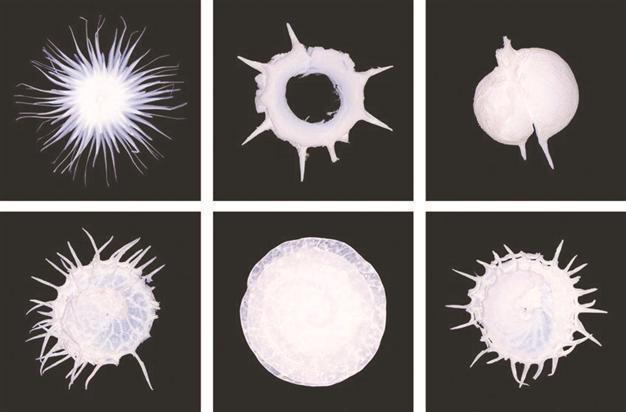Photographs like a top layer of an archaeological dig
ISTANBUL

In Barans’ images, the passage of time is implied in the decaying petals of a flower, the slow erosion of rocks and stones; in the movement of the moon across a sheet of water, or of clouds across the sky.
The Istanbul Modern Photography Gallery presents a retrospective of the later collaborative work of Barbara and Zafer Baran, from 1999 to the present titled ‘Observatory.’ This is the first comprehensive exhibition of Baran’s work in Turkey with this show, consisting of 11 series, which the couple think of as “the top layer of an archaeological dig.” Curated by Head of the Photography Department at Istanbul Modern, Sena Çakırkaya, the exhibition will be on view Until April 24, 2014.Barbara and Zafer Baran have been collaborating since 1981. Through experimental practices, they create images intermingled with art history, nature, science, and technology, thus rendering visible the simple, ordinary, minimal aspects that are hidden in life. The couple has always centered their work on “the enjoyment of photography for itself, at its purest (the act of beholding and transforming).”
The Barans have been featured in solo and group exhibitions in many galleries and museums including the Saatchi Gallery, the British Library, and the Tel Aviv Museum of Art, and their photographs are held in the collections of the Victoria & Albert Museum and Tate Britain among others. The couple has also produced numerous work for commissioned projects, ranging from institutional to cultural. “Time” is at the heart of the Barans’ work, which is a reflection of what they see and think about. They document the natural wear and tear caused by time, they document ephemerality, transformation, the fragility of nature, and the impact of humans on the world and render them aesthetically visual: rocks and stones from archaeological sites, deteriorating flowers, the depths of a noxious flower, weeds unwanted in parks, bird’s-eye views of cities as seen from an airplane, diverse shapes created with the lights reflecting from the moon and stars.
“In our images, the passage of time is implied in the decaying petals of a flower, the slow erosion of rocks and stones; in the movement of the moon across a sheet of water, or of clouds across the sky; in the yearly dispersal of seeds; or in the light reaching us from an unimaginably distant star. There is the time of the photographic exposure itself, varying from split seconds to many minutes. And there is of course our own time, as we move along within the framework of our life,” they said.
“Seeking out what is timeless and quiet,” the Barans observe objects and the spaces “in between” and, using their own methods, record the traces of human existence and interference. Nature appears frequently in their most recent photos. The couple prefer to draw inspiration from what they see and find in daily life, as well as from the materials in their surroundings; such as pebbles, seeds, tracks left by airplanes in the sky, or dust and moonlight.
Giving meaning to ordinary images
The object in the photograph called “Observatory” (2002), which has given its title to the exhibition, is an apple fallen from a tree in the garden, which caught the attention of the couple while they were visiting the observatory built by Zafer Baran’s father in the 1960s in İzmir. The photograph, which is a shot of the apple taken from above, also has a symbolic meaning in terms of observation, which is at the basis of Barans’ work, of looking at objects from different points of view, and of their later moon and star drawings. “Often, in our work, what is very small, or close up, has a clear affinity with what is distant: an apple becomes an eye, or a cosmic phenomenon; seeds become star clusters viewed through a telescope. We are not depicting the stars and the moon as they are, but using their light to make “drawings.” This reflects our interest in the act of drawing itself as well as the language of photography and its boundaries,” the couple said.
















